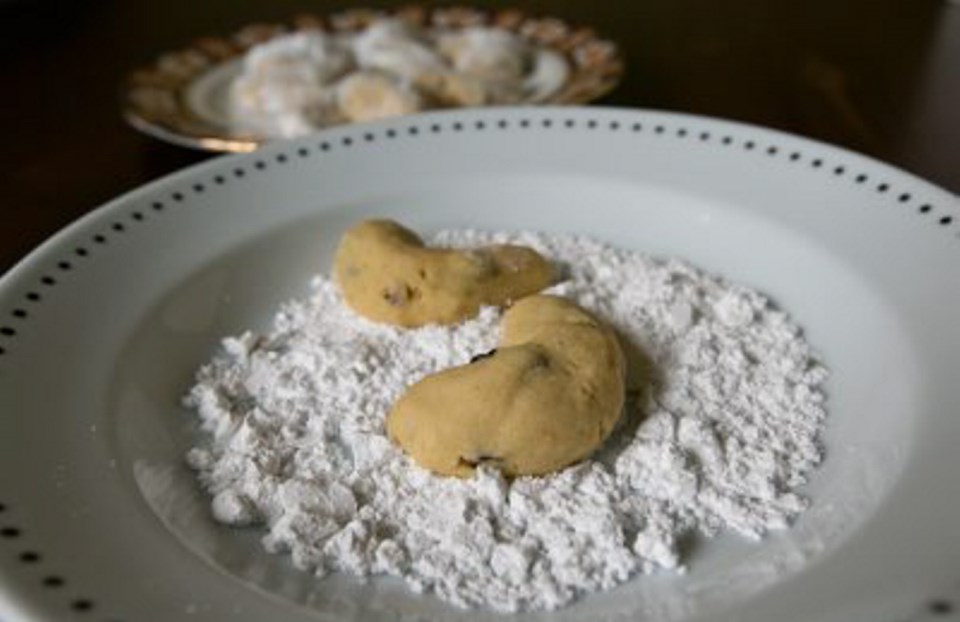Dear Eric: As Christmas baking season is upon us, I am wondering if you know where I might find real currants? I am looking for actual dried currants, which have a bit of a crunch, different flavour and more body than the small dried grapes or raisins labelled as currants in the stores.
Christine Ward
Dear Christine: This is a question I’ve received a few times over the years and it’s understandable why there’s confusion when two different fruits share the same name.
One type of currant is a tiny berry related to the gooseberry. Its varieties include black, red and white currants. These berries are sold fresh in the summer for a fairly short period of time. You will find them at farmers markets and some grocery stores. They can be eaten fresh, out of hand, or be used to make a colourful addition to a sauce, fruit salad or dessert. Black and red currants are used to make preserves and flavoured liquids, such as jams, jellies, vinegars and syrups.
I don’t recall ever seeing red, black or white currants commercially sold dried. And, even if I did find them, they are not the type of currant that for centuries has been used in baked goods, such as fruitcakes, steamed pudding and mincemeat tarts.
That type of currant is the name of a dried fruit, and it looks like a very dark and tiny raisin because, well, it is a raisin.
Small, seedless, zante grapes are dried to make that type of currant. Several sources suggest this dried fruit got a name derived from the name of the place zante grapes were first grown — Corinth, Greece. Say Corinth, pronounced Kórinthos, five times and it does sound a bit like the word currant.
According to the Oxford Companion to Food, such currants have been used since classical times, sometimes in savoury dishes, but most often in baked goods and sweets. The book says they figure in recipes dating back to the 17th century.
So Christine, the dried fruit you are seeing in stores are “real” currants that, as I described, are not related to the other type of currant you’ll see fresh in the summertime.
Below is a shortbread cookie recipe using dried currants soaked in orange liqueur before incorporating them into the buttery dough.
Brown Sugar Shortbread Crescents with Currants and Orange
This whipped-style of shortbread is easy to make and shape. It’s also sublime, rich as it is with orange-liqueur soaked currants.
Preparation time: 30 minutes, plus currant soaking time
Cooking time: 25-30 minutes, per sheet of cookies
Makes: About 36 cookies
1/2 cup currants
1/3 cup orange liqueur
1 1/2 cups butter, at room temperature
3/4 cup packed golden brown sugar
1 tsp pure vanilla extract
2 1/4 cups all-purpose flour
1 tsp finely grated orange zest
• icing sugar (optional)
Place currants and orange liqueur in a small bowl and let currants soak two hours. Drain the currants well. (Reserve leftover orange liqueur for another use, such as flavouring whipped cream, or coffee.)
Line two baking sheets with parchment paper. Place butter, brown sugar and vanilla in a bowl, or the bowl of your stand mixer, and beat until light and well combined. Add flour, orange zest and currants and mix just until combined and a dough forms.
Roll the dough into 2.5-centimetre balls and divide and set on the baking sheets. Roll one of the balls in your hand into a 6.5-cm long log. Shape the log into a crescent and set back on the baking sheet. Repeat with the remaining cookie dough balls, spacing each cookie about five cm apart on the baking sheet. Refrigerate and chill the cookies at least 20 minutes before baking
Preheat oven to 300 F. Set an oven rack in the middle position. Bake the cookies, one sheet at a time, for 25 to 30 minutes, or until they begin to very lightly brown around the edges. Cool the cookies to room temperature on a baking rack. Store in a tight-sealing container until ready to serve. If desired, roll the crescent-shaped cookies in icing sugar just before serving.
Note: If freezing these cookies after baking, be sure store them, carefully arranged so they maintain their shape, in air-tight containers.
Eric Akis is the author of the hardcover book Everyone Can Cook Everything. His columns appear in the Life section Wednesday and Sunday.



